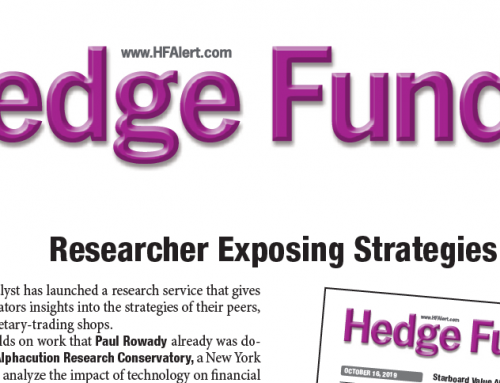Our team has largely been on hiatus for the past couple months developing several new assets, including most notably our new Alphacution “content storage, distribution and promotion application” – er – website, and a bunch of new content to go in it which begins to showcase our research methodologies and initial modeling output.
For the attention-deficit crowd (and those who are not already reading this on the site), you can skip the following shout-outs and contextual comments by hopping to www.alphacution.com now. In addition to our Feed section (for commentaries, videos, press coverage and company news), you will find a lot of “freemium” content accessible in the Open Exhibits Library and the Document Library. A short – and FREE – registration process will open access to those components and add your details to our newsletter distribution list. Please don’t skip that part – and for extra credit, send us your feedback (info@alphacution.com) no matter the temperature…
For the rest of you, here’s some of the context behind these latest developments:
First, a most heartfelt shout-out to our long-time partner, Yong Kyung @ 140db. Thank you, brother, for your unwavering dedication and out-of-this-world creativity. You are my ambassador of Quan, man…
Next, another grateful shout-out to the members of our Advisory Board. Rare for a research platform of this type, we have selected several deep-experience, C-level executives from many specific walks (like high-performance technology, data management, data science, research development, strategy development, business development and communications) within the financial services sector. Well-known and highly respected within their respective networks, these innovators will serve as sounding boards and potential collaborators along the journey of developing our platform. Thanks to each of you for your interest in and support of this work. Be sure to check them out here.
Lastly, I want to offer a brief primer on where we are and where we are headed:
If we agree on the hypothesis that information technology has a critical role to play in the success (or failure) of information-intensive businesses – such as wholesale banking, asset management or proprietary trading – then it stands to reason that measuring the impact of IT investments by market participants would allow those participants to better navigate their competitive landscape(s), and for all close observers to benchmark those players against one another to determine leaders, laggards, limits, what’s working, what’s not, you name it… In fact, if it could be measured, technical leverage indicators could dramatically upgrade the commentary from largely opinion-based to data-driven. That sounds refreshing to us…
Well, it turns out that technical leverage can be measured – and, better yet, a lot of the data is already sitting right out in the open. You just need to know where to look – and possess the patience, tenacity and experience to assemble that hairy puzzle. What’s more, if technical leverage can be measured, then we can answer the incredibly important question: “What is your Return on Technology?” (This is a topic for an upcoming post – as well as existing content on the site. Hint: We can quantify the transformation!)
Out of the gates, our modeling covers roughly 120 FSI companies and a few digital leaders. Our initial obsession, however has been on the largest banks – 58 companies at last count – because they represent most of the largest buyers of technology in the ecosystem. Our top line goal has been to define the value of technology spending in that sector. We have now soundly checked that box – and much more.
Longer term, we are in pursuit of a 360°/ top-down / bottom-up view of the space across all segments. As such, we won’t be stopping with the global banks. In the research cross-hairs for upcoming studies, we are eager to model the technology spending patterns of exchanges / liquidity venues and the business process outsourcing (BPO) / technology consulting players. Caveat emptor: Our upcoming research calendar can change based on client demand and the broader network feedback loop. That said, the target FSI segments to model (in addition to the mentions above) include brokers, traditional asset / wealth managers (including pension funds), alternative asset managers (including hedge funds and prop shops), insurance, technology vendors / solution providers, utilities, and any other segments we forgot.
Right now, we think there is a ton of valuable information in our libraries. And, yet, we are only scratching the surface of what is already in our models. If you don’t see it, ask. If you like what we have done so far, be an active part of our feedback loop. Chances are we may be able to spin up a new exhibit to frame the answer to a new or existing question – or schedule it within an upcoming study.
One last thing: Some of this work is very technical. On top of that, we are developing some new “language” to describe our findings in a standardized way. (These standards are a requirement for benchmarking.) If you don’t understand something at first, remain calm. Discomfort is a natural part of innovation. We are learning to communicate these new findings as much as you are learning to absorb them – and speak some new language. Repetition and multi-modal communications are part of the plan.
Thanks, in advance, for taking a looking closer at our work – and for giving us your attention to the bottom of this page…





